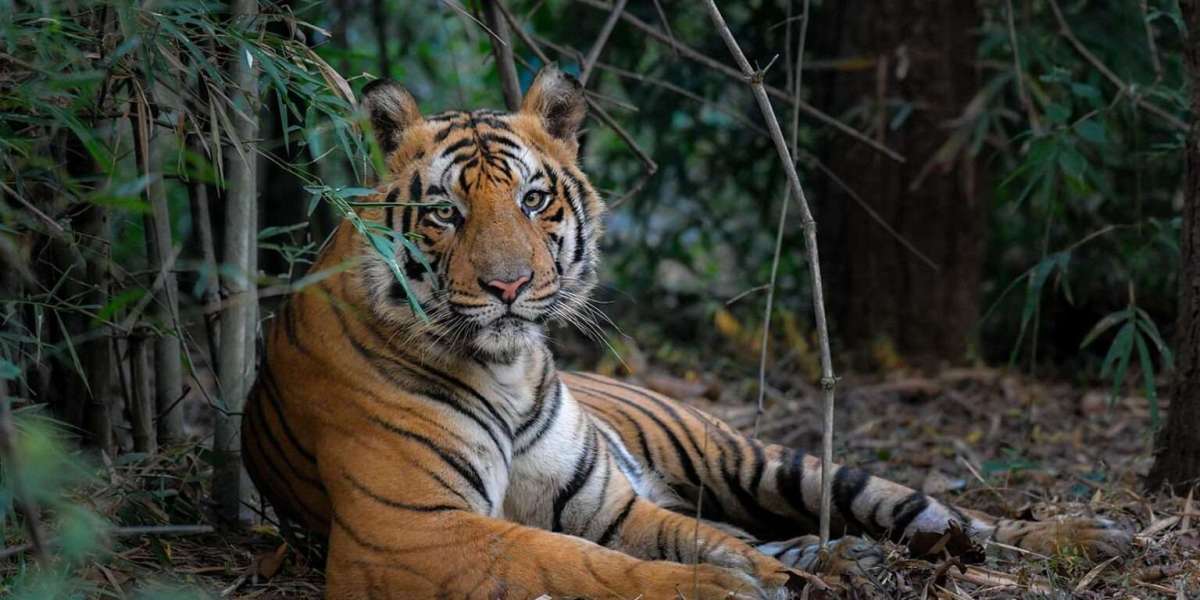From tracking Bengal tigers in dense sal forests to spotting one-horned rhinoceroses on the floodplains of Assam, every region offers a new story. This guide explores the best destinations, travel tips, and must-see species for anyone looking to discover India’s untamed side.
Why Choose India for Wildlife Tours?
Here are a few compelling reasons why wildlife tourism in India is a once-in-a-lifetime experience:
- Unmatched Biodiversity: India hosts over 400 species of mammals, 1,300 bird species, and countless reptiles, insects, and amphibians.
- Home of Iconic Species: Bengal tiger, Asiatic lion, Indian leopard, Indian elephant, one-horned rhinoceros, snow leopard, and more.
- Diverse Habitats: Rainforests, grasslands, deserts, wetlands, mangroves, and alpine ecosystems—all in one country.
Whether you're a birdwatcher or a big-cat enthusiast, India wildlife tours cater to every interest.
Top National Parks for India Wildlife Tours
1. Bandhavgarh National Park (Madhya Pradesh)
- Known for: Highest density of Bengal tigers in the world
- Also spot: Leopards, sloth bears, sambar deer, and over 250 bird species
Bandhavgarh is ideal for first-time visitors seeking tiger sightings and lush landscapes. The Tala zone is especially famous for frequent big cat encounters.
2. Kanha National Park (Madhya Pradesh)
- Inspiration for: The Jungle Book by Rudyard Kipling
- Unique species: Barasingha (hard-ground swamp deer)
Kanha is one of the best-managed parks in India, perfect for family tours and serious wildlife photographers alike.
3. Jim Corbett National Park (Uttarakhand)
- Highlights: India's oldest national park and part of the larger Corbett Tiger Reserve
- Safari Experience: Jeep and canter safaris; Dhikala zone offers forest lodges
Located at the foothills of the Himalayas, Corbett offers a rich variety of landscapes, from grasslands to riverine forests.
4. Kaziranga National Park (Assam)
- Famous for: Two-thirds of the world’s one-horned rhinoceros population
- Other wildlife: Wild water buffalo, swamp deer, and Eastern swamp tiger
Recognized as a UNESCO World Heritage Site, Kaziranga offers a completely different ecosystem from central India’s tiger reserves.
5. Sundarbans National Park (West Bengal)
- Unique feature: World's largest mangrove forest
- Home to: The elusive Royal Bengal tiger, saltwater crocodiles, and mudskippers
Jungle safaris here are conducted via boats, offering an eerie and fascinating journey through tidal waterways and dense foliage.
Specialized India Wildlife Tours
Depending on your interest, several specialized tours are available:
1. Big Cat Safaris
Track Bengal tigers in Bandhavgarh, Tadoba, and Ranthambore; look for leopards in Jawai; and chase snow leopards in Hemis National Park, Ladakh.
2. Birding Tours
Bharatpur Bird Sanctuary (Keoladeo), Chilika Lake, and Eaglenest in Arunachal Pradesh are heaven for birdwatchers.
3. Elephant Safaris
Periyar Wildlife Sanctuary in Kerala and Nagarhole National Park in Karnataka offer excellent chances to view wild elephants in large herds.
4. Luxury Wildlife Tours
Combine wildlife viewing with high-end stays at resorts like Taj Safaris, Oberoi Vanyavilas, and SUJÁN properties.
Best Time to Visit for India Wildlife Tours
- Winter (October to February): Comfortable weather and great for birdwatching.
- Summer (March to June): Higher chances of spotting tigers and other big cats near water sources.
- Monsoon (July to September): Many parks remain closed, but a few in South India stay open.
Tips for a Perfect Wildlife Tour in India
- Book in Advance: Permits for core zones in top parks often sell out quickly.
- Hire Naturalist Guides: A knowledgeable guide enhances your understanding and increases your chances of sightings.
- Pack the Right Gear: Neutral clothing, camera with zoom lens, binoculars, sunscreen, insect repellent.
- Be Patient and Respectful: Nature rewards those who wait and observe silently.
- Support Sustainable Tourism: Choose eco-certified operators and avoid disturbing wildlife.
Conservation and Community Impact
India wildlife tours not only provide thrilling experiences but also play a role in conservation. Your visit helps generate funds for park maintenance, anti-poaching units, and local livelihoods. Many eco-lodges now work hand-in-hand with tribal communities to ensure tourism benefits both wildlife and people.
Final Thoughts
India wildlife tours offer much more than just glimpses of wild animals—they reconnect you with the primal beauty of nature. Whether you're venturing into the heart of Madhya Pradesh in search of tigers or drifting along the mangrove creeks of the Sundarbans, every tour tells a story of survival, mystery, and awe.













